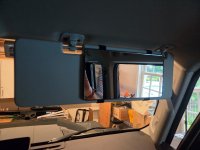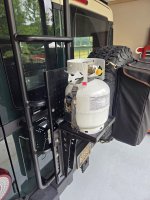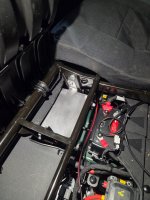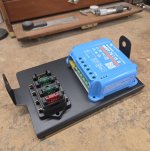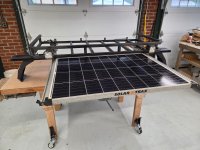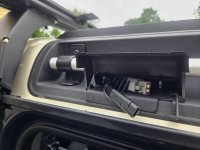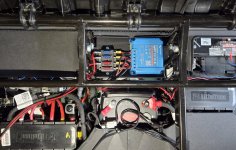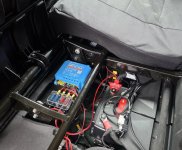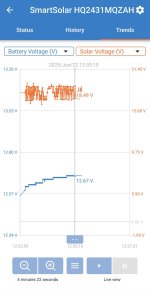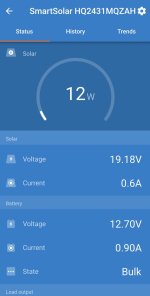I finished everything to do with my solar implementation about a week ago but haven't had time to install the rack extension and solar panel on the roof until today. The solar panel is mounted on slides under the roof rack and pulls out for use. In these first two photos, the panel is stowed, you can see that it is completely under the rack.
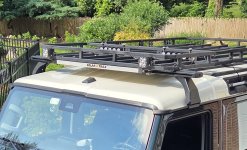

The controller is a Victron, mounted under the back seat, and the solar panel connects to an additional plug I added in the factory front left roof outlet box. The charge controller and its mounting is covered in this post:
https://forum.expeditionportal.com/...nadier-trialmaster.247640/page-7#post-3222108 and the wiring and routing of the wires to the roof is covered in this post:
https://forum.expeditionportal.com/threads/outfitting-my-grenadier-trialmaster.247640/post-3222216
The panel deployed... in the first photo you can see the legs under the panel, those are used when the panel is removed from the slides and placed on the ground.



The panel can slide all the way out and be removed and placed on the ground if the vehicle isn't position optimally to catch the sun, this photo shows the same components one of my Jeeps with the panel on the ground. I carry an extension cable for that purpose.
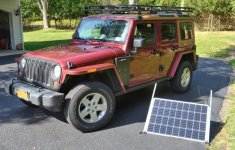
The Victron has three charge modes - bulk, absorption and float.
In bulk mode the controller delivers the maximum possible current to the battery until it reaches a set voltage (absorption voltage). It's a partly cloudy day and I haven't had the panel in full sun yet, but a screen shot from the Victron app shows the 100w rated panel generating 86w and the system charging the battery at 5.9 amps in bulk mode. Also on this screen I've got the load output displayed, that's an outlet in the cargo area for my fridge/kitchen which is not in the Grenadier at the moment so there's no current being drawn. The display shows that the panel is generating 17.60 volts; in full sun without clouds this panel can generate 23 volts so the charge current to the battery in that situation would go up.
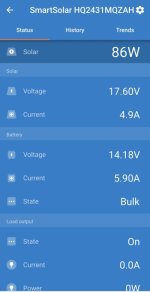
Once the battery reaches the preset voltage for absorption, it switches to that mode and reduces the charging current. The controller maintains a constant voltage (absorption voltage) while the current gradually decreases. This stage ensures the battery is fully charged. The controller is drawing much less power from the solar panel and supplying less than 1 amp to the battery.
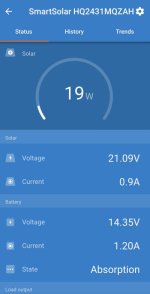
And finally, the controller reduces the voltage to a lower float voltage, providing a trickle charge to compensate for self-discharge and keep the battery topped off. In this mode it's drawing even less current from the panel and supplying less current to the battery.
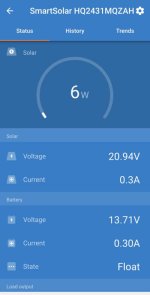
Overall the system works exactly as expected; the only difference between the implementation in the Grenadier and that in the Jeeps is the charge controller - in the Jeeps I use a <$20 Harbor Freight PWM controller and that controller works very well, but I decided to go for the Victron MPPT controller for the Grenadier. But all the hardware, the racks, slide, etc. gets used on both Jeeps and on the Grenadier.




